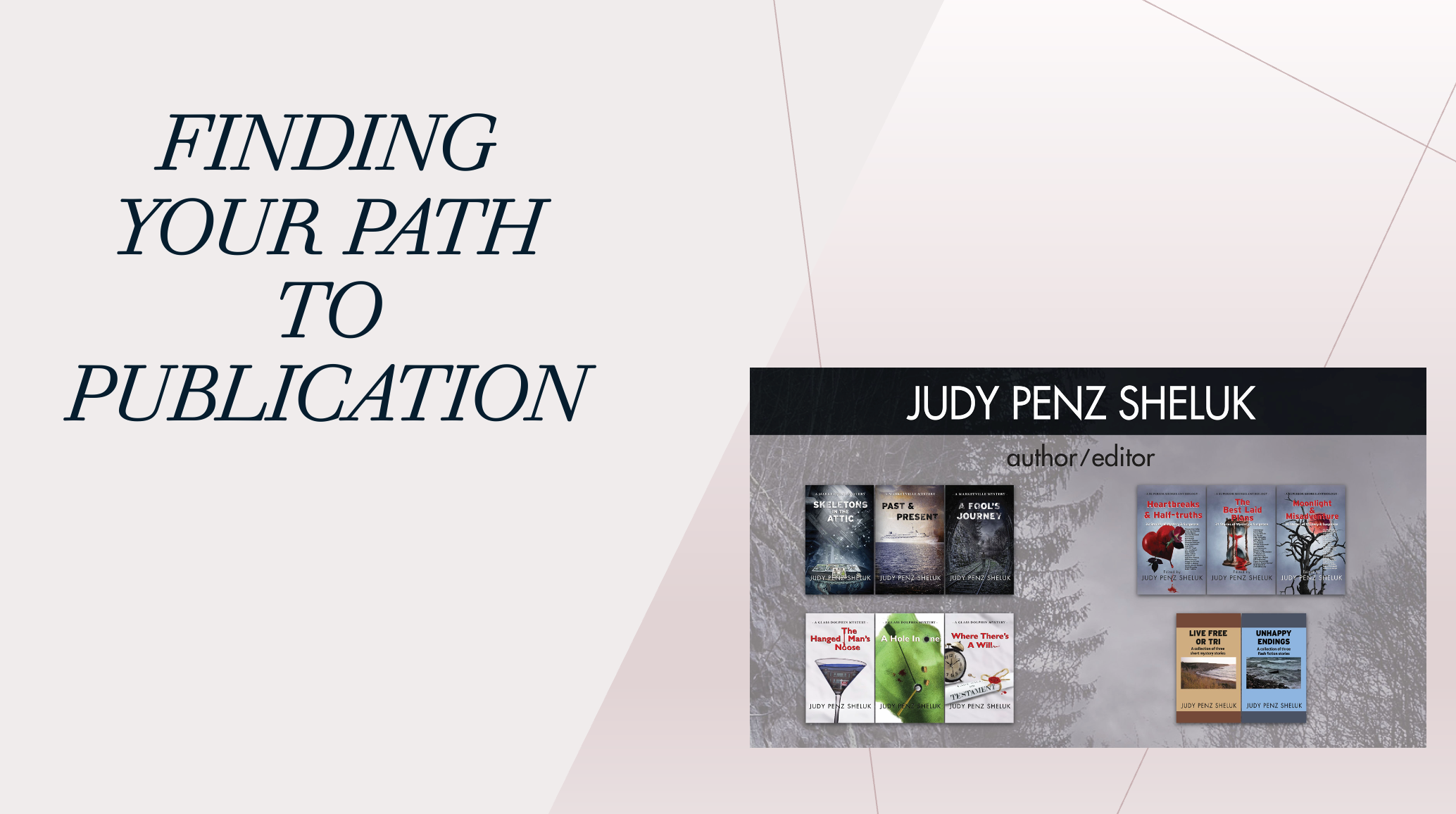Each year, libraries across North America set up events around NaNoWriMo. In 2021, after learning that I’d been a NaNoWriMo “failure” on two previous occasions, the adult programming coordinator at my local library asked me if I’d consider hosting a virtual “debriefing” of sorts on November 30. The title: “Failing (and Succeeding!) with NaNoWriMo.”
I agreed. If nothing else, it would encourage me to not only sign up once again, but to make a concerted effort to reach the 50,000-word mark on the fourth book in my Marketville Mystery series.
The 50,000 words didn’t happen, at least not for me, though I did come close. Not that it mattered. It turned out the attendees—even those who didn’t reach the 50k goal—were far more interested in the publishing process than drilling down on the whys and wherefores of failing or succeeding in NaNoWriMo. Furthermore, the nature of their questions made me realize that the vast majority had absolutely no concept of how to proceed once their manuscript was ready.
I let that simmer for a few days and then approached the programming coordinator with an idea: a virtual presentation that would explore the pros and cons of various publishing options. She loved the concept, and we settled on a title—“Finding Your Path to Publication”—and a date and time of February 9, 7-8:30 p.m., which would allow 30 minutes for a Q&A. Because the event was virtual, it would be accessible to anyone who wanted to attend, even if they lived outside of the area.
Creating the Presentation
I’d never prepared a PowerPoint slideshow before, but a quick tutorial convinced me that it was both easy to use and the perfect platform for an in-person or virtual presentation. It was time to create the content.
Based on the questions I’d been asked at the NaNoWriMo event, I expected that most of my audience would have limited knowledge of the publishing process. Because of that, I was careful to explain acronyms (e.g., Kindle Direct Publishing (KDP) or Draft2Digital (D2D)). I also knew that I had a lot of information to impart in a very short time, which meant developing an easy-to-follow structure.
For “Finding Your Path to Publication,” I structured the presentation into six main parts with subsections as follows:
- Are You Ready?
- Editing/proofreading/formatting the manuscript
- Building your brand/social media/website
- Defining the genre/subgenre
- Copyright
- Third-person bio
- Query letters
- Synopsis
- Loglines/book blurb
- Publishing Paths
- Traditional
- Small press
- Assisted
- Independent/self
- Social
- Royalties 101
- Contracts
- Advertising & Promotion
- Q&A
Once the slideshow was completed to my satisfaction, I did a run-through to make sure that I had about 55 minutes of material, which allowed for a five-minute introduction by the adult programming director. This required a bit of tweaking, so if you’re planning a presentation, it’s important not to miss this step.

Resource Handouts
“Finding Your Path to Publication” contains a lot of information. I didn’t want to share my slideshow—looking ahead, I wanted to sell this to other libraries and/or associations. I also didn’t want to get bogged down during the presentation or Q&A with questions about where to find out more about any specific topic. The solution: A five-page PDF resource document with links (making no recommendations), which the library emailed out after the presentation to all attendees. The PDF was broken down into several sections:
- Government
- Editing & Proofreading
- Query Letters
- Synopsis
- Loglines
- Assisted Publishing
- Social Publishing
- Formatting
- Retailers
- Website Builders/Host
- Associations (including IBPA)
- Helpful Websites & Blogs (including my own)
The document took a few hours to prepare, but I wish I’d had something like it when I was starting out. More importantly, the library and attendees really appreciated it, and it will be easy to update if required.
To Record or Not to Record?
Because “Finding Your Path to Publication” was a public library event, I did not want it recorded and shared because that would limit future sales potential. However, I’m currently in talks with an association who would record it live and archive it in a members-only section on their website.
Money Matters
Most libraries offer free programming, and my local library is no exception. As such, I was paid a flat fee, and I expect this will be the case most often. That said, my local arts council offers paid programming as a fundraising initiative, paying the presenter a portion of the cost of admission. When it comes to money matters, flexibility is key.
The success of “Finding Your Path to Publication” has led to the commission of another: “Self-Publishing: The Ins & Outs of Going Indie,” and I’ve since added a presentations section to my website. It’s also led to this article, which you’re reading now.
And it’s all because I was a NaNoWriMo “failure.”
Judy Penz Sheluk is a former journalist, magazine editor, and the bestselling author of two mystery series: The Glass Dolphin Mysteries and the Marketville Mysteries. Her short crime fiction appears in several collections, including three Superior Shores Anthologies of Mystery & Suspense, which she also edited. She is a member of Sisters in Crime, International Thriller Writers, the Short Mystery Fiction Society, and Crime Writers of Canada, where she serves as chair on the board of directors. Find her at judypenzsheluk.com.
Learn more about this topic: